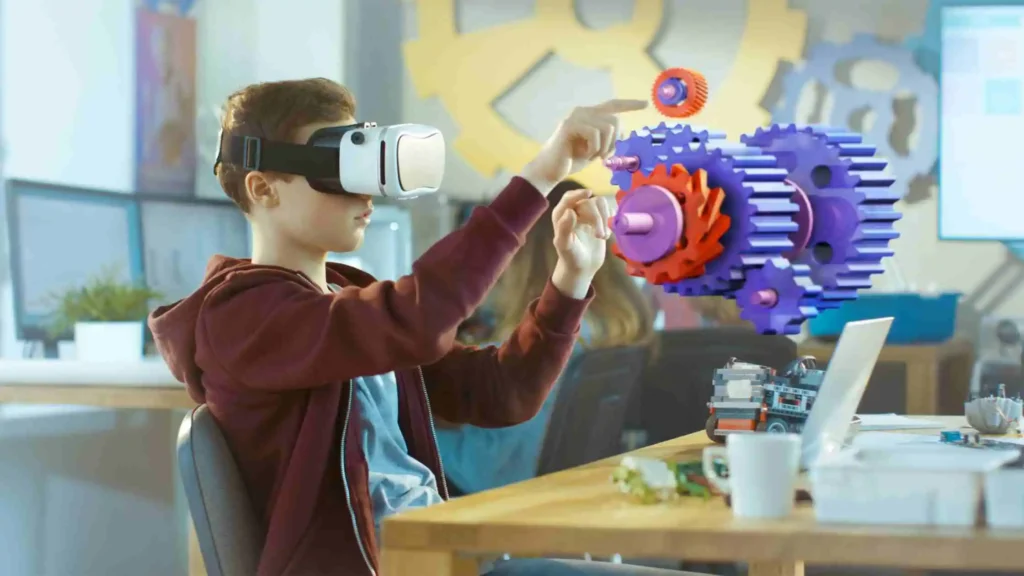Interposition psychology is a visual trick that helps us figure out how far things are from each other. Imagine one thing hiding or covering part of another – that’s interposition! Our brains use this trick to decide which thing is closer and which is farther away. This trick is super important for understanding depth, helping us know if something is near or far. It helps us recognize objects, guess their size, understand motion, and see the world better. So, when we learn to read these visual hints from interposition, we have a special skill to explore and understand what’s around us, making our vision of the world more accurate and interesting!
Depth Perception and Monocular Cues
Understanding how far objects are from us and their spatial relationships is known as depth perception. Monocular cues, which use information from just one eye, are essential for this. One of these cues is interposition, where one object partially covers another, creating a sense of depth.
This helps us figure out that the covered object is closer, influencing how we perceive depth and distances. There are other monocular cues like judging size, height in our sight, perspective from lines and colors, light and shadows, texture changes, and the way things move around us, all playing roles in our ability to perceive depth.
Types of Interposition Psychology
| Type of Interposition | Description |
| Classic Interposition | When one object is positioned in front of another, blocking part or all of the view of the latter, leading to the perception of depth and relative distance. It’s a fundamental cue for visualizing spatial relationships. |
| Social Interposition | This refers to the positioning or hierarchy of individuals within a social group. It involves how people perceive and establish dominance, authority, or social status in interactions and relationships. |
| Cognitive Interposition | Relates to the mental processes where one idea or concept partially obscures or overlaps with another in the cognitive domain. It influences how individuals organize and prioritize information in their thoughts. |
| Perceptual Interposition | The phenomenon where the brain combines and organizes visual information from both eyes to create a unified perception. It involves the integration of binocular cues for depth, contributing to a coherent visual experience. |
| Temporal Interposition | Pertains to the sequencing or timing of events in cognitive processes. It involves the partial concealment of one temporal event by another, impacting the perception of time and the organization of memories. |
Interposition in Social Psychology
Interposition acts as a silent influencer, guiding how we see and interact with others. It’s a bit like a secret code our brains use to understand social situations. This special way of looking at things affects how we figure out who’s in charge, who’s showing authority, and even how we quickly decide what we think about someone. Imagine it as a tool helping us navigate the social world, especially in groups or relationships. In social hierarchies, where people show who’s boss or who deserves respect, interposition helps us pick up on these signals quickly. When we form relationships, these interposition cues come into play, shaping our first impressions and how we connect with others.
Gestalt Principles and Interposition Psychology
Gestalt principles, which come from psychology, show how our brains put together visual parts to make complete pictures. Interposition, a part of Gestalt psychology, helps us see things as a whole and organized. When we talk about Gestalt organizational principles, interposition tells us that our brains like to put different pieces of information together to understand the whole picture.
Stereopsis and Interposition
Stereopsis helps us see the world in 3D! It happens because our eyes see things a bit differently, and our brain combines the pictures from each eye to understand depth. Now, interposition is another cool trick our eyes play. It’s like when one thing is blocking part of another thing. This makes us feel like one thing is closer or farther away. The cool part is, stereopsis needs both eyes, while interposition works even if you’re using just one eye.
Applications of Interposition Psychology

Interposition psychology has many practical uses with important effects in different areas. Here are some examples:
- Computer Graphics and Virtual Reality: In computer graphics and virtual reality, interposition cues are crucial. They help create lifelike simulations, making the experience more real and engaging for users.
- Robotics: In robotics, machines use interposition psychology cues to understand and move around their surroundings. This contributes to the development of advanced robotic systems.
- Art and Design: Artists use interposition to make paintings and pictures look three-dimensional. It’s vital for creating the illusion of depth, making scenes and objects appear realistic.
- Social Psychology: In social psychology, interposition involves how our minds perceive relationships between groups or objects. It influences social hierarchies and relationships. People might use interposition cues to show dominance, set boundaries, or communicate social hierarchies.
These examples highlight the importance of interposition psychology in various fields like technology, art, and social interactions.
Interposition psychology cues are essential for advancements in virtual reality, robotics, and visual arts. It also provides valuable insights into social dynamics and human behavior.
Perceptual Organization and Interposition
Interposition psychology, especially the Gestalt principle of interposition, is used in many areas. In art and design, knowing about interposition helps create beautiful pictures by changing how we see depth and objects together.
In user experience (UX) design, using interposition psychology ideas makes information easy to understand and helps in clear communication.
In social situations, interposition cues affect how we see social hierarchies, shaping our views on dominance and respect in social groups. Understanding interposition psychology adds a fascinating layer to how we perceive and interact with the world around us.
Interposition and Visual Perception
The way we understand the world is through a process called perception, which involves picking out, arranging, and making sense of information from what we see. One important part of this process is interposition, a cue that becomes crucial when one thing covers or blends with another.
This happens a lot when objects overlap, affecting how we see the depth or distance between them. When things overlap, our brains think the covered object is farther away. This influences how we perceive distances and how objects are arranged in space.
It’s not just about figuring out distances between things; it also has a big role in our social interactions. Whether we’re judging how close or far objects are or making quick decisions about our surroundings, interposition is always at play.




